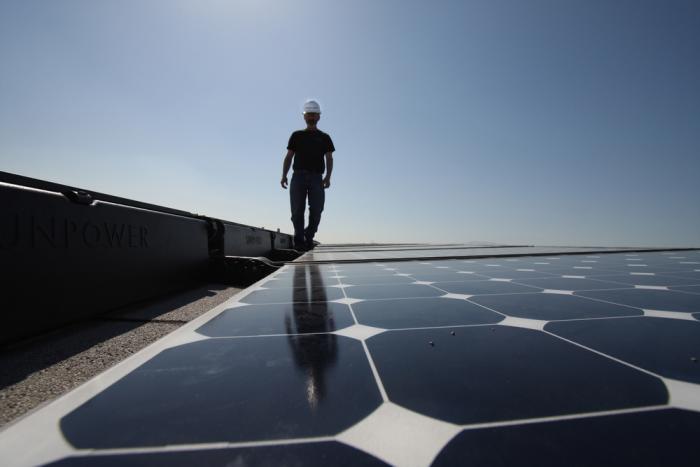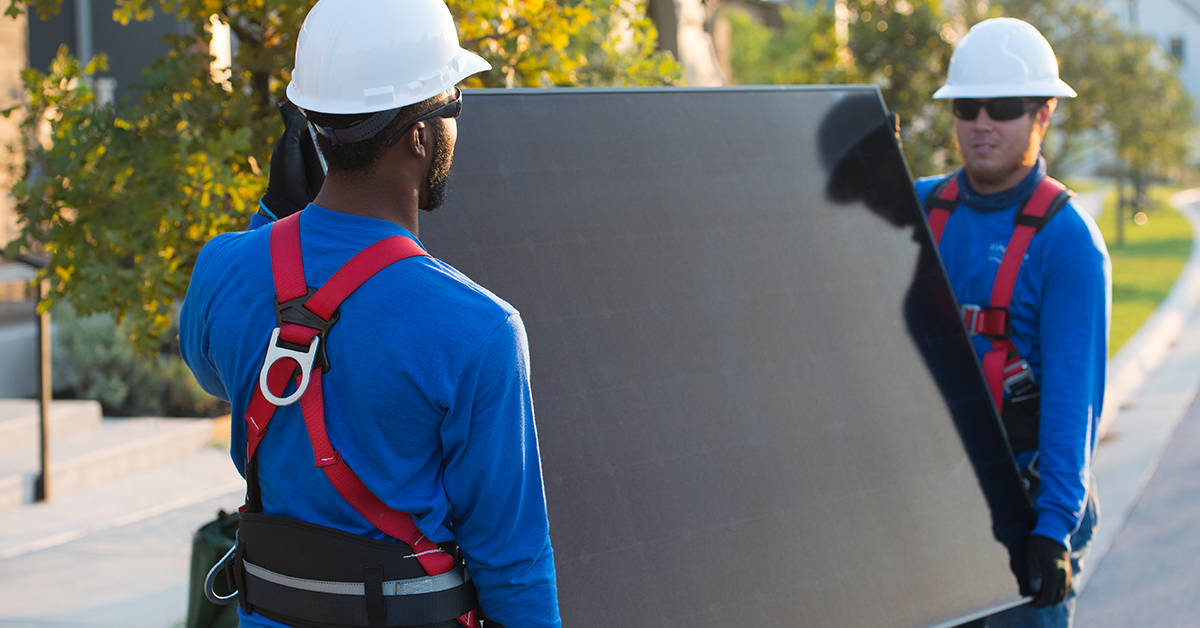by e2sol
Share
by e2sol
Share

If your organization decides to start using solar power, you’ll soon find yourself involved in two important business partnerships. The first will be with the solar company that designs and installs the photovoltaic (PV) solar system. And the second partnership will be with the local utility. Once your solar panels are connected to the grid, you’ll find a much more profitable relationship with the local utility company than you’ve ever had before.
Project Management
Your solar company knows the ins and outs of a solar system and they’ll know what the utilities are looking for during the installation process. Once the contract is signed, most of the day-to-day contact with the utility will be mediated by two people. The first will be the project manager, who will manage the construction of the solar project from start to finish. This project manager will work closely with the interconnection coordinator, who will handle the technical end of matching the solar system with the utility’s gear.
The Process
Utilities change from region to region. All of them have different rules about connecting solar panels to the grid. It’s the job of the project manager and interconnection coordinator to understand what those rules are and to make sure the project stays on track. The process will involve five major steps from beginning to end before the solar system is up and running.
- Site Survey: The project will begin with a series of surveys that study everything from the utility’s underground cables to your own switchgear (e.g., the breakers and fuses that protect and isolate your equipment). The topography of the area and anything else that might affect solar production will also be taken into account. This will help answer questions about where the solar system should be sited.
- Design: All this information will be used to create a “30 percent design.” (It’s called that because once it’s done, the design is about 30% complete.) This plan will consist mainly of two drawings—one is a single line drawing showing the electrical diagram, and the other is a site plan indicating where the solar array(s) will be placed. These will be submitted (as an “Interconnection Application”) to the utility with a request for permission to proceed with building.
- Permits: While waiting on approval from the utility, the project manager will be working on completing the design and obtaining any other required permits. There can be building permits, city permits, state permits and more. This can be a time-consuming process depending on location and how complicated the solar design is. In some cases, the utility can dictate changes in the wiring, meter and other equipment to make sure everything’s compatible. If a project is especially large, it might require additional grid integration studies.
- Construction: Once the utility gives its blessing and construction starts, the project manager takes the lead on nearly everything. It will be their job to avoid any bumps in the road while the panels and other hardware are delivered, installed and connected. Once that’s done, government inspectors (typically from the city or state) check over everything to make sure all of the requirements are met. The project manager will deal with the inspectors and handle any inevitable last-minute tweaks.
- Operation: Following inspection, the project manager will request permission to operate (referred to as a “PTO”) from the utility. The utility will respond with a final check. With their sign-off, you’ll be ready to flip the switch and start producing solar power. But that’s not the end of things, the project manager will still work with you for a few weeks to ensure that system monitoring is set up and everything is up to your standards.
The average solar installation process takes about 10 months to a year. A more complicated one can take longer. Once the project is completed, your relationship with the solar company will likely continue throughout the lifespan of your solar equipment. Meanwhile, your new relationship with the utility will be as a fellow generator of electricity. In most cases, you’ll be using net metering to help offset your energy costs. Regardless, your energy bills will be going down—and you’ll be doing something good for the planet.
This Article Originally Appeared On The SunPower Resources Blog
STAY IN THE LOOP
Subscribe to our free newsletter.
Because commercial solar panels are a significant and long-term investment, business leaders who take the leap will want to know that their investment is covered. Enter a solar panel warranty. Solar warranties mitigate the risk of faulty equipment, breakage and/or underperformance that might occur. Luckily, problems with solar panels are statistically rare, particularly when you choose solar equipment from proven solar providers like SunPower. However, it […]
Listing the many benefits of commercial solar energy for business is easy but quantifying their value can be more challenging. The impact on property value is a prime example. While it’s likely true that a building equipped with high-quality solar panels for commercial property is more valuable than a facility that relies on fossil fuel-generated energy, determining exactly how […]
In 2019, the highest number of total solar installations smashed previous records, leading experts to project another big year for the solar industry in 2020. But we all know what happened next. Despite the year’s setbacks, solar power has remained resilient inspiring a hopeful outlook for the year ahead. Below are 5 projections SunPower has identified […]
Clouds gather. The sky grows dark. A solar homeowner may naturally wonder: How much energy can my solar system generate during a cloudy day? While of course solar panels need sunlight to produce energy, it’s important to learn how cloudy conditions can affect the efficiency of solar energy generation and how factors such as partial […]





